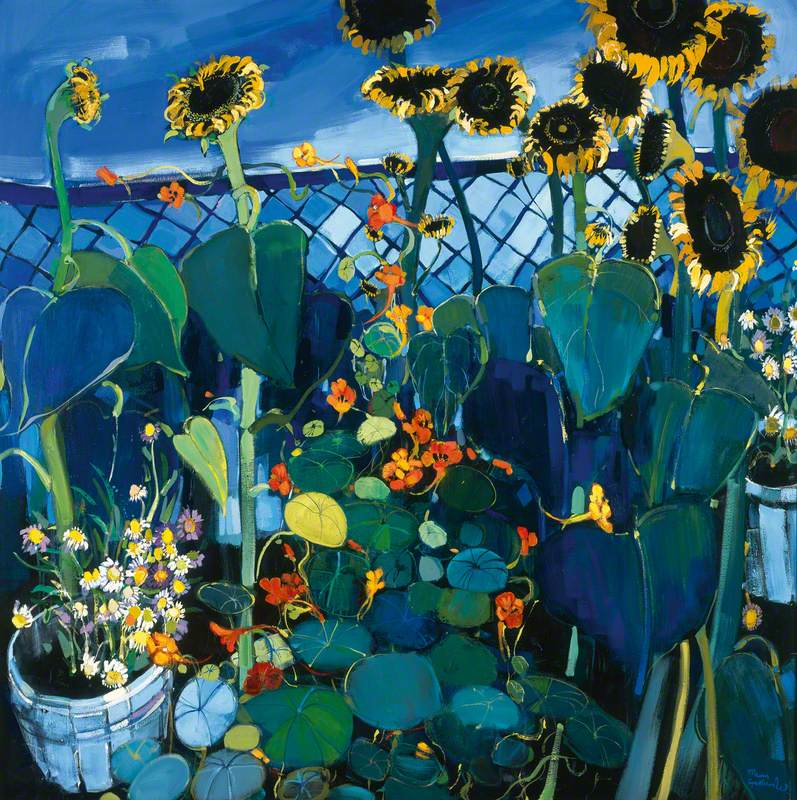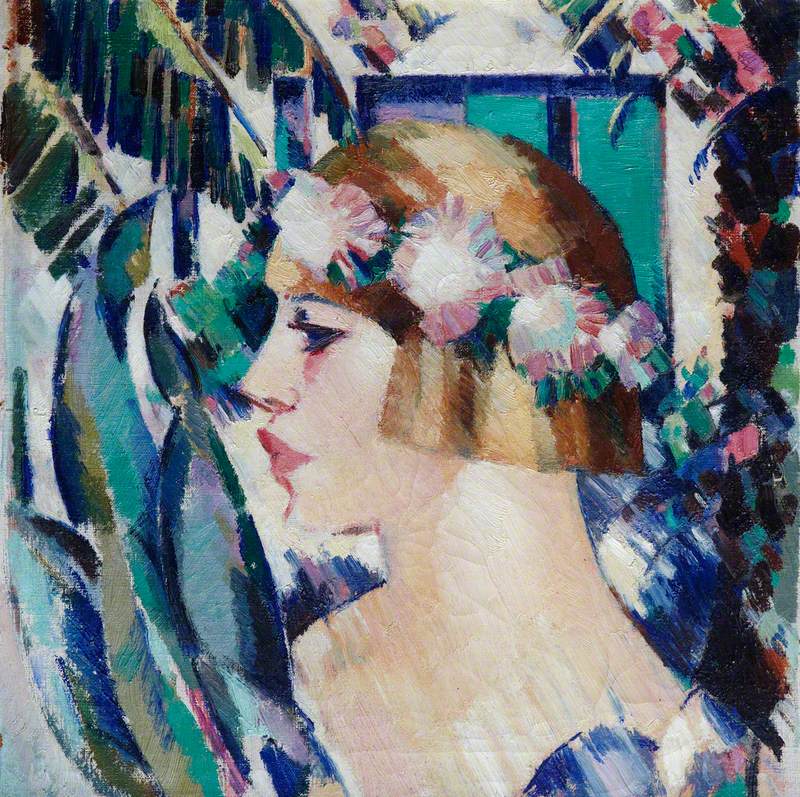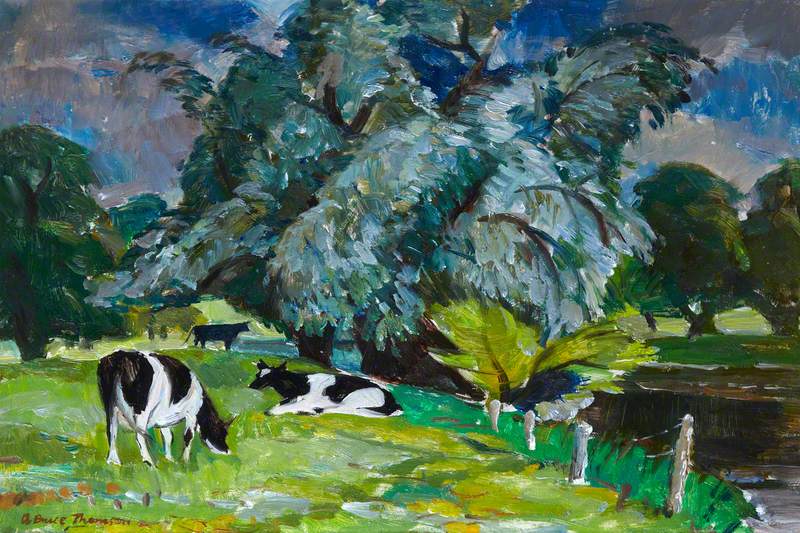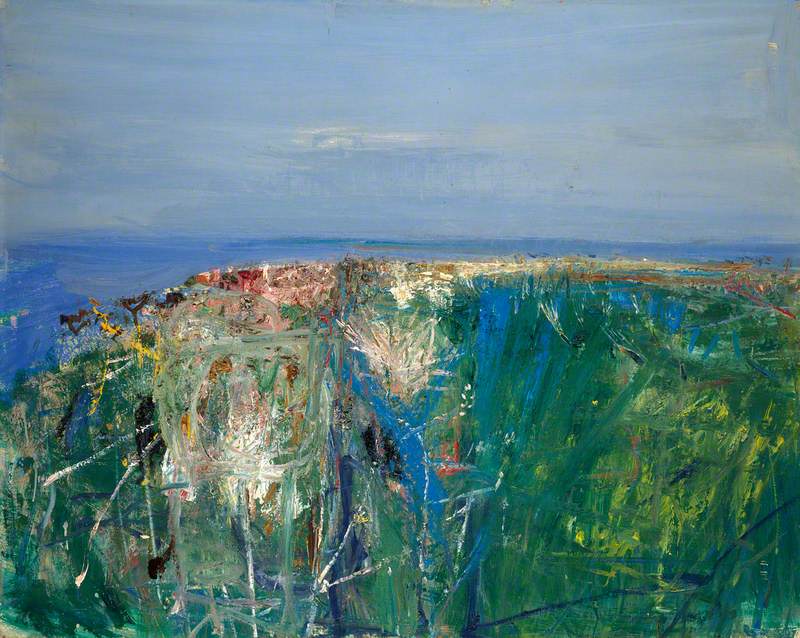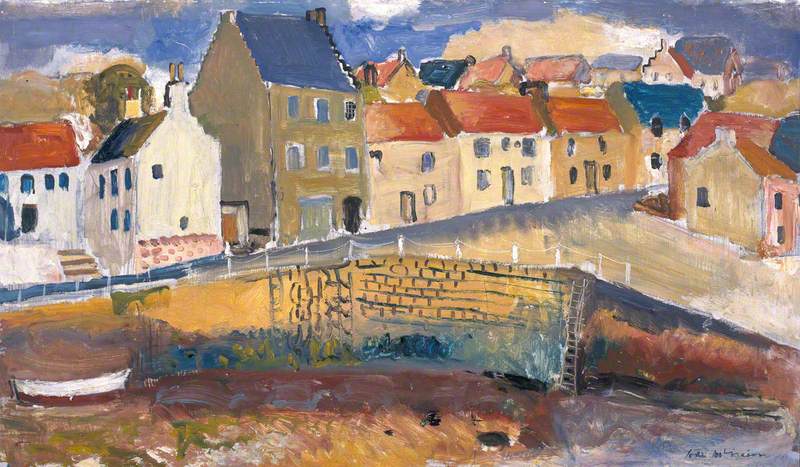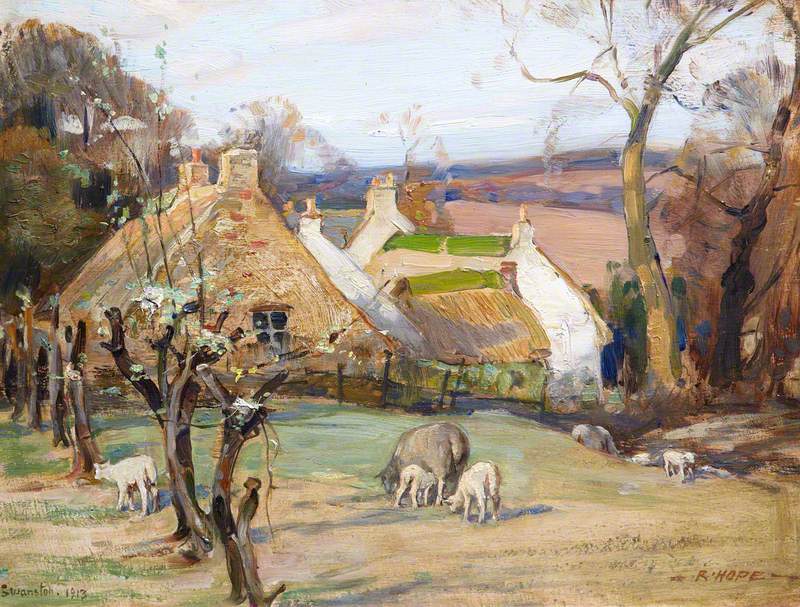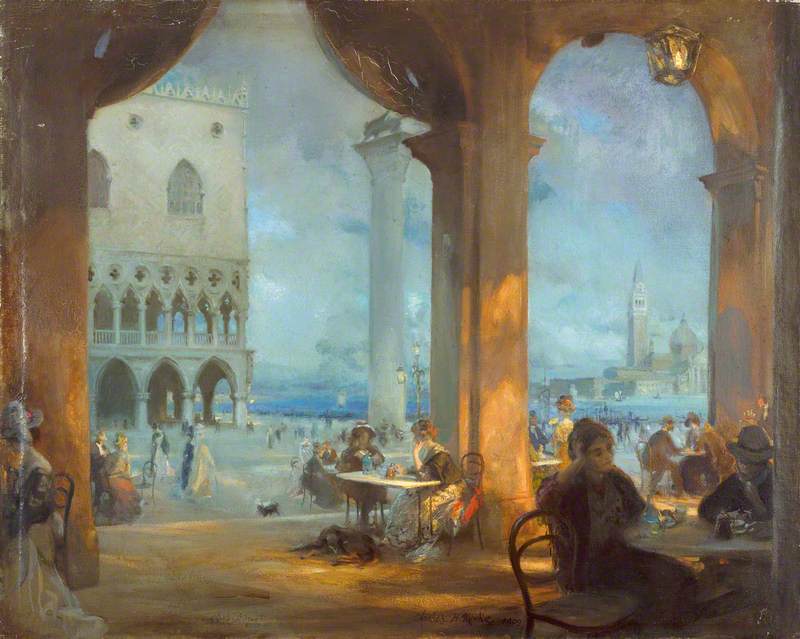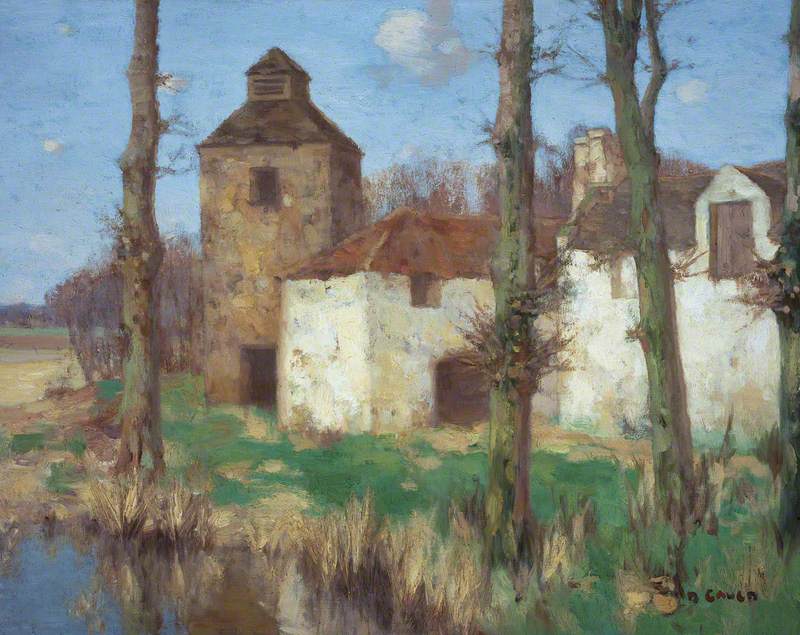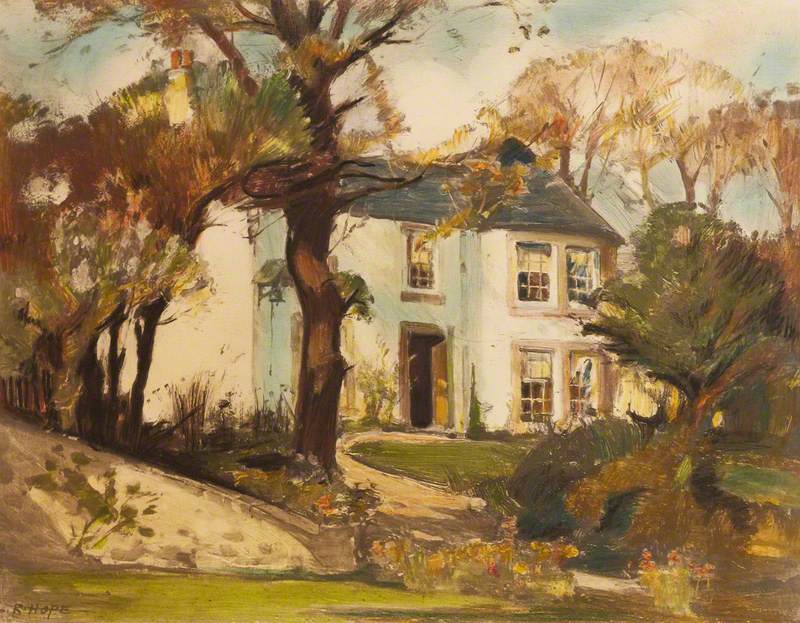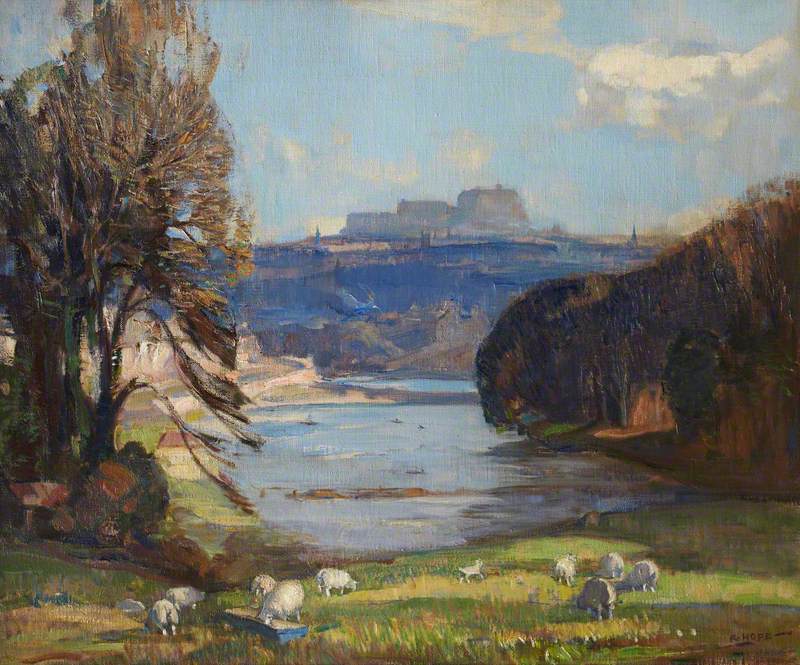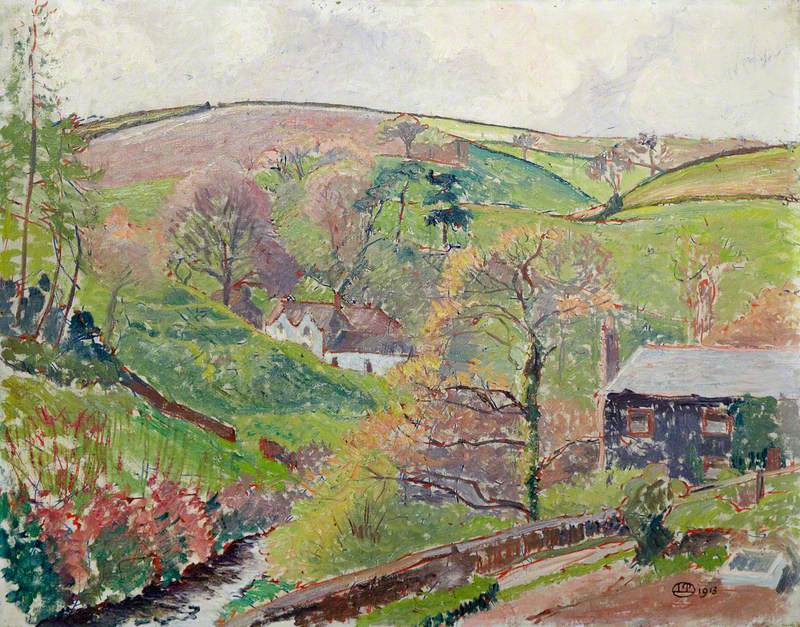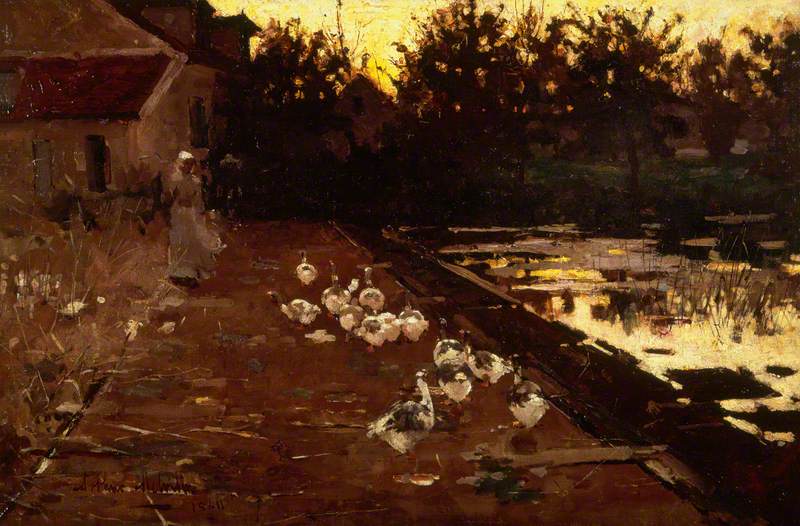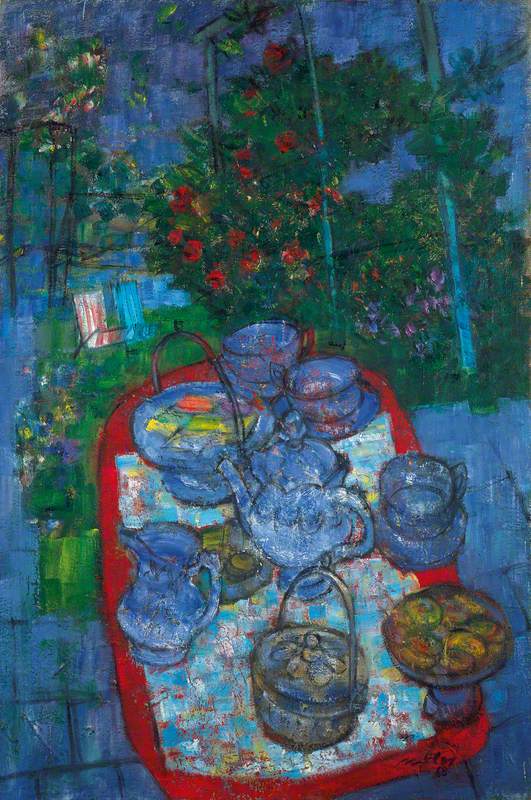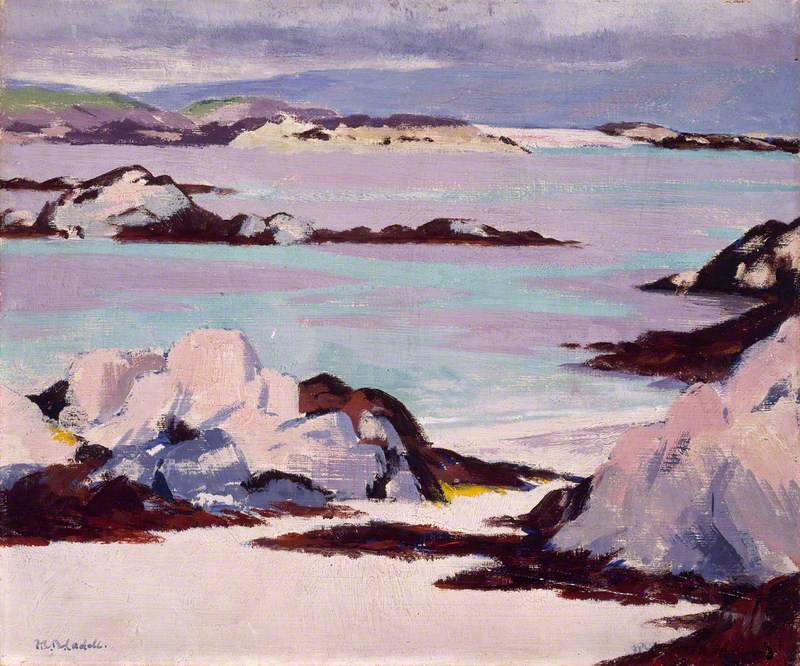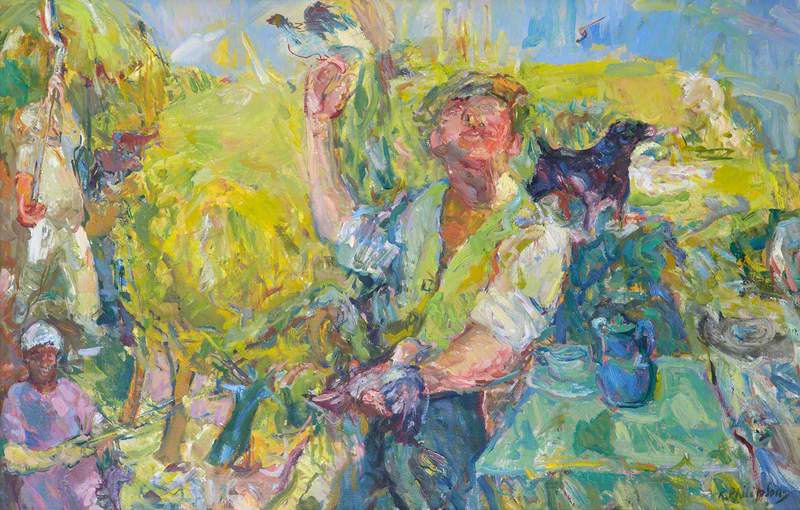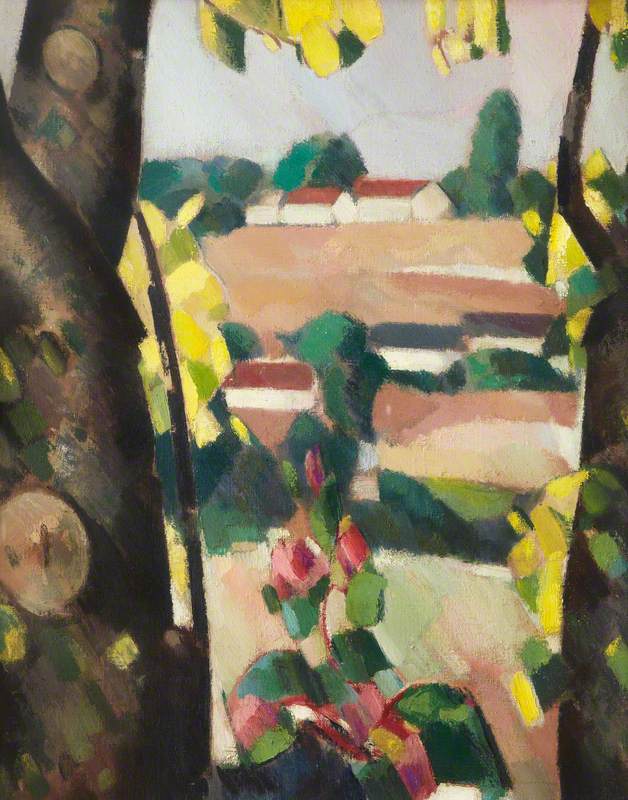"Spring drew on...and a greenness grew over those brown beds, which, freshening daily, suggested the thought that hope traversed them at night and left each morning brighter traces of her steps." Charlotte Brontë
Celebrating spring and early summer from the collection of Museums & Galleries Edinburgh.
Margaret Findlay is Learning and Public Programmes Manager and is a lover of spring and summer and paintings from our City Art Centre collection. This curation highlights works from the City's collection celebrating light and nature and evocations and memories of warmer months. It symbolises everything I love most about my favourite seasons.
-
Sunflowers
SunflowersSunflowers with their smiling faces are the epitome of summer. Mary Gallagher is a Scottish Postwar & Contemporary painter who was born in 1953 and is known for her vibrant bright paintings and still lifes. I love how we are thrust into the world of this wonderful balcony confronted with a tangle of nasturtiums and sunflowers and balanced by the trusty marguerite daisy. It is a maze of flowers filling the senses with the scent of summer. Just looking at this painting makes me happy!
Mary Gallagher (b.1953)
Oil on canvas
H 144.8 x W 144.8 cm
Museums & Galleries Edinburgh – City of Edinburgh Council
-
Villa Gotte Garden
Villa Gotte Garden c.1920John Duncan Fergusson was a Scottish artist and sculptor, regarded as one of the major artists of the Scottish Colourists school of painting. Born in Leith, J.D. Fergusson's studies took him to Paris in the 1890s where he studied the Impressionists and attended the Académie Colarossi. He exhibited in London in 1905 and settled in Paris in 1907 working in a Fauvist style then later in a Cubist manner. This portrait just sings summer with its dappled light, lush vegetation and feeling of warmth. It just makes me want to get outside in the sunshine.
John Duncan Fergusson (1874–1961)
Oil on canvas
H 37.5 x W 37.1 cm
Museums & Galleries Edinburgh – City of Edinburgh Council
-
Willow Trees, Cattle and River
Willow Trees, Cattle and RiverAdam Bruce Thomson was born in 1885, attending first the Trustees Academy and then Edinburgh College of Art where he received diplomas in both Drawing and Painting, and Architecture before scholarships took him abroad to Spain and then Paris. He was an accomplished etcher and lithographer and he also gained expertise in the difficult media of pastel and watercolour. By the 1920s, his technique was closest to S.J. Peploe, Cadell and other contemporaries favouring the technique of painting on a gesso ground so the subjects tended to be treated in flat areas of colour. I love this pastoral scene which conjures up many memories of walking in the countryside in warmer months with cows grazing in the bright sun. The landscape is almost luminous.
Adam Bruce Thomson (1885–1976)
Oil on board
H 35.6 x W 45.7 cm
Museums & Galleries Edinburgh – City of Edinburgh Council
-
Garden at Broomhill
Garden at BroomhillBroomhill House near Selkirk was the home of Scottish artist John McNairn (b1910) for nearly forty years from 1970 till his death in 2009. This Scots Georgian house, with its old walled garden and wooded dean provided inspiration for McNairn's painting throughout this period. Nothing speaks of spring more than gardens and local parks bursting into blossom and life. I would love to meander through this pergola. This painting stimulates all the senses, I hear the insects buzzing and can smell the flowers.
John McNairn (1910–2009)
Oil on board
H 96 x W 122 cm
Museums & Galleries Edinburgh – City of Edinburgh Council
-
Summer Grasses and Barley on the Clifftop
Summer Grasses and Barley on the Clifftop c.1962Like no other artist Joan Eardley conjures up the senses and feeling of being outside in nature. One of Scotland's most enduringly popular twentieth century artists, her powerful and expressive paintings transformed her surroundings, including the rugged Scottish coastline and Glasgow's street children. During her lifetime she was considered a member of the post war British avant-garde, portraying the realism of life in the mid-twentieth century. I feel as if I am walking over the clifftops here with the salty wind on my face and I can hear the beating of the sea.
Joan Kathleen Harding Eardley (1921–1963)
Oil on board
H 110.2 x W 137.8 cm
Museums & Galleries Edinburgh – City of Edinburgh Council
-
Crail, Fife
Crail, FifeWandering around the East Neuk of Fife villages conjures up memories summer days out, often with fish and chips for tea eaten al fresco. Crail is one of the most picturesque villages captured here by John McNairn. Born in the Scottish Borders in 1910, John McNairn enjoyed a long and prolific artistic career. He began his training at Edinburgh College of Art in 1927. Throughout his long career McNairn created paintings in which he orchestrated a simple vocabulary of colour line and form.
John McNairn (1910–2009)
Oil on board
H 52 x W 89 cm
Museums & Galleries Edinburgh – City of Edinburgh Council
-
Swanston Farm, Edinburgh
Swanston Farm, Edinburgh 1913Robert Hope ARSA RSA was born Edinburgh, he studied at the Edinburgh School of Design, the RSA schools and Academie Julian Paris. He started as a lithographic draughtsman but soon turned to painting. His work included portraits, landscapes and views of Edinburgh in oil. We have many paintings in our collection by Hope, absolutely charming views catching areas of City and environs in the early 20th century. This lovely pastoral farm scene captures the blossoming trees. Swanston remains a popular and picturesque place to visit for a spring walk.
Robert Hope (1869–1936)
Oil on board
H 27 x W 40 cm
Museums & Galleries Edinburgh – City of Edinburgh Council
-
At Cramond, Early Spring
At Cramond, Early Spring 1885James Faed ‘Junior’ the eldest son of James Faed and Mary Cotton, was born at Overshiel House in Mid Calder. His uncles had excelled in pictures of humble Scottish life and people, but James Faed Junior was essentially a landscape painter, inspired directly by his father. He really captured the depth and colour of the Scottish countryside and excelled at the depiction of running water. Painting all over Scotland he eventually settled in London. I love this painting of Cramond, a popular area of Edinburgh, with the structural trees reflected in the River Almond. The washing is done and out drying in the spring sunshine.
James Faed the younger (1857–1920)
Oil on canvas
H 27 x W 36.5 cm
Museums & Galleries Edinburgh – City of Edinburgh Council
-
La piazzetta, Venice
La piazzetta, Venice 1909Charles Hodge Mackie was born in Aldershot. The family moved to Edinburgh where he attended Edinburgh University as a medical student before choosing to study art at the Scottish Royal Academy School. After studying Mackie lived and worked in Kirkcudbright. In 1892, he travelled to Brittany were he spent time with the artist Paul Sérusier. Sérusier introduced Mackie to the works of Gaugin, Vuillard and Le Sidaner. His work shows a strong French influence. I love this painting because it conjures up warm Continental holidays and lazy sunny afternoons in ancient squares watching the world go by.... a time we will hopefully return to soon.
Charles Hodge Mackie (1862–1920)
Oil on canvas
H 100.7 x W 125.7 cm
Museums & Galleries Edinburgh – City of Edinburgh Council
-
Spring Morning
Spring MorningDavid Gauld was an important Scottish artist who worked in both oils and stained glass and was regarded as being an innovator within the Glasgow Boys group. Some of his works, such as 'St. Agnes' and 'Music', are seen as precursors of the Art Nouveau movement. Japanese and Pre-Raphaelite influences can also be seen in his work. His typical subjects included cows, calves and mills, but he did occasionally paint portraiture. This painting beautifully reflects the intense light of early spring. It is a close study focussing on the effects of light on the farm buildings and in the water.
David Gauld (1867–1936)
Oil on canvas
H 70.5 x W 90.2 cm
Museums & Galleries Edinburgh – City of Edinburgh Council
-
Woods at Temple
Woods at TempleSir William George Gillies RA was a renowned Scottish landscape and still life painter. Gillies concentrated principally on landscapes and still lifes, frequently depicting the Lothian, Fife and Border regions. In 1934 Gillies attended an exhibition of Paul Klee's work and was impressed by the childlike qualities and imaginative use of colour that he saw. Klee's influence is clear in Gillies' post 1934 work. I love the concentration on the tree canopy in this painting, and in early spring it is so intense and lush. We should look up more frequently in summer.
William George Gillies (1898–1973)
Oil on board
H 43 x W 59.5 cm
Museums & Galleries Edinburgh – City of Edinburgh Council
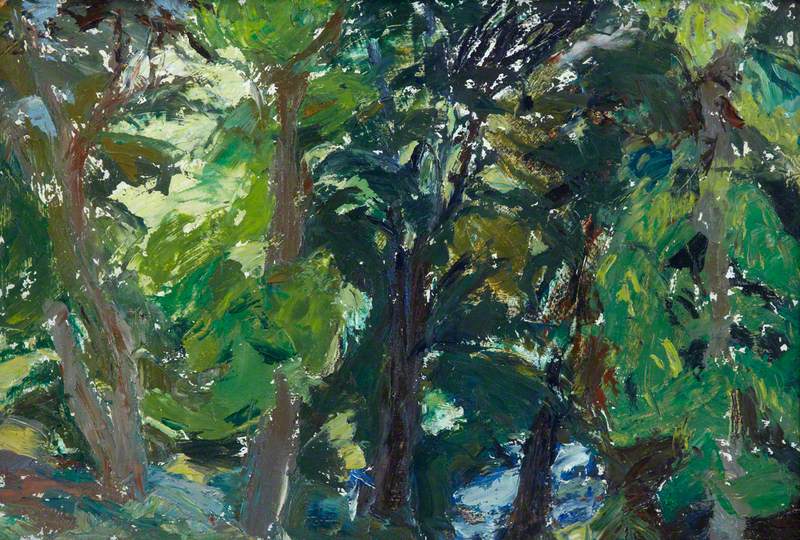 © Royal Scottish Academy / Bridgeman Images. Image credit: Museums & Galleries Edinburgh – City of Edinburgh Council
© Royal Scottish Academy / Bridgeman Images. Image credit: Museums & Galleries Edinburgh – City of Edinburgh Council
-
Swanston Cottage, Edinburgh
Swanston Cottage, EdinburghRobert Hope ARSA RSA was born Edinburgh, he studied at the Edinburgh School of Design, the RSA schools and Academie Julian Paris. His work included portraits, landscapes and views of Edinburgh in oil. We have many paintings in our collection by Hope, absolutely charming views catching the City in the early 20th century. Between 1867 and 1880, Robert Louis Stevenson's family held a lease on Swanston Cottage, which they used as a summer holiday home. During the family's tenancy, the young Robert Louis Stevenson made frequent use of the cottage, being attracted by the quiet country life and the feeling of remoteness. The house and its romantic location are thought to have inspired his writing.
Robert Hope (1869–1936)
Oil on panel
H 20 x W 25.5 cm
Museums & Galleries Edinburgh – City of Edinburgh Council
-
Edinburgh from Craiglockhart
Edinburgh from CraiglockhartRobert Hope ARSA RSA was born Edinburgh, he studied at the Edinburgh School of Design, the RSA schools and Academie Julian Paris. His work included portraits, landscapes and views of Edinburgh in oil. We have many paintings in our collection by Hope, absolutely charming views catching the City in the early 20th century. In this gentle pastoral view we look over Edinburgh's iconic skyline from Craiglockhart at that time. Walking around many of Edinburgh's green spaces brings back so many memories of long spring days and the City's dramatic and unmistakeable skyline is evident from almost every angle.
Robert Hope (1869–1936)
Oil on canvas
H 64.7 x W 76.9 cm
Museums & Galleries Edinburgh – City of Edinburgh Council
-
Blackpool Valley, 1913
Blackpool Valley, 1913 1913Lucien Pissarro was born on 20 February 1863 in Paris. He was the oldest of seven children; the son of famous Impressionist painter Camille Pissarro. His landscape paintings employ techniques of Impressionism and Neo-Impressionism. I love the fresh luminous colours in this painting and the new leaves on the trees and promise of of warmer days. This is classic Impressionism - thin, yet visible brush strokes, open composition, and an emphasis on accurate depiction of light in its changing qualities.
Lucien Pissarro (1863–1944)
Oil on canvas
H 54.6 x W 65.4 cm
Museums & Galleries Edinburgh – City of Edinburgh Council
-
Homeward
Homeward 1880Arthur Melville was a Scottish painter of Orientalist subjects. Melville, though comparatively little known during his lifetime, was one of the most powerful influences in the contemporary art of his day, especially in his broad decorative treatment with water-colour, which influenced the Glasgow Boys. He spent the summer of 1879 in Grez-sur-Loing where a number of artists gathered, en plain air adherents, many being followers of Jules Bastien-Lepage. He seemed keen to find peasant models who would pose en plein air following in the footsteps of the work of French rural Naturalists. This work is a direct inspiration of this style and conjures up warm spring evenings in the golden hour.
Arthur Melville (1855–1904)
Oil on canvas
H 64.5 x W 96.8 cm
Museums & Galleries Edinburgh – City of Edinburgh Council
-
Tea in the Garden
Tea in the Garden 1968Nothing sums up spring and summer than afternoon tea in the garden. The perspective in this work focuses attention on the tea table. It has a limited palette of blues, greens and reds and this intensifies the feeling of light and shade in the garden.
Robert Miller (1910–1993)
Oil on canvas
H 76.2 x W 50.8 cm
Museums & Galleries Edinburgh – City of Edinburgh Council
-
Pathway, Loch Lomond
Pathway, Loch LomondGeorge Leslie Hunter was a Scottish painter, regarded as one of the four artists of the Scottish Colourists group of painters. Hunter painted a variety of still-lifes, landscapes and portraits, and his paintings are critically acclaimed for their treatment of light and the effects of light. We can feel the light and warmth and can imagine walking along this path in the woods. The light is intense strengthened by the zesty colours of the canal boats in the background. The path weaves through the wood and we have the feeling of being directly part of this scene.
George Leslie Hunter (1877–1931)
Oil on canvas
H 61.7 x W 74.3 cm
Museums & Galleries Edinburgh – City of Edinburgh Council
-
The Sheepfold
The SheepfoldWilliam MacBride was a Glasgow-born painter known for landscape and country activities such as sheep shearing and woodcutting. This painting is full of zesty colours evoking the intense light of early spring with its seasonal theme. I love the foreshortening so the focus is on the sheep. We feel we can walk right into this scene, a spring walk in the country-side.
William MacBride (1856–1913)
Oil on canvas
H 45.7 x W 36.2 cm
Museums & Galleries Edinburgh – City of Edinburgh Council
-
A Hallow Fair Scene
A Hallow Fair SceneWalter Geikie was born in Edinburgh on 10 November 1795. At the age of two he suffered a "nervous fever" which left him deaf. Geikie was a talented draughtsman but his real success and love lay in drawing directly from life, although he was also a capable painter and etcher. His favoured subjects were the simple, kindred people of everyday Edinburgh life, often interspersed with elements that verge on caricature yet observed with empathy. We all associate spring and early summer with festival and galas, and in this last year we have all missed community get-togethers hugely. Hopefully they will return soon.
Walter Geikie (1795–1837)
Oil on panel
H 35.5 x W 42.2 cm
Museums & Galleries Edinburgh – City of Edinburgh Council
-
Iona
IonaFrancis Campbell Boileau Cadell RSA was a Scottish Colourist painter, renowned for his depictions of the elegant New Town interiors of his native Edinburgh, and for his work on Iona. Nothing reminds us more of a summer day than a visit to the beach with the warmth of the sun. Cadell captures the spiritual feel of Iona with a sense of open space and gorgeous, sparkling light.
Francis Campbell Boileau Cadell (1883–1937)
Oil on panel
H 37.5 x W 45.2 cm
Museums & Galleries Edinburgh – City of Edinburgh Council
-
Summer Morning
Summer MorningThis painting conjures up all the movement and animation of a Van Gogh Provençal painting. Sir Robin Philipson had an influential presence on the Scottish Art Scene through his lifetime. Principally a painter, he served as Head of School of Drawing and Painting at Edinburgh College of Art where he expertly maintained the ideals of the post-war Edinburgh School. And, for a whole decade he was President of the RSA between 1973-1983 - a period seen as a Golden Age in Scottish Painting. Philipson was well known for his bold use of colour and his liberal use of heavy impasto in his works. All the vibrancy of a summer morning in the garden is captured here.
Robin Philipson (1916–1992)
Oil on canvas
H 77 x W 110 cm
Museums & Galleries Edinburgh – City of Edinburgh Council
-
Les Tilleuls, Bécheron
Les Tilleuls, Bécheron 1932John Duncan Fergusson was a Scottish artist and sculptor, regarded as one of the major artists of the Scottish Colourists school of painting. Born in Leith, J.D. Fergusson's studies took him to Paris in the 1890s where he studied the Impressionists and attended the Académie Colarossi. He settled in Paris in 1907 working in a Fauvist style then later in a Cubist manner, which is evident stylistically in this landscape. France is my favourite place and I have missed visting in the last 18 months during the Pandemic. I can't wait till I return.
John Duncan Fergusson (1874–1961)
Oil on canvas
H 63.6 x W 50.7 cm
Museums & Galleries Edinburgh – City of Edinburgh Council
Explore artists in this Curation
View all 18-
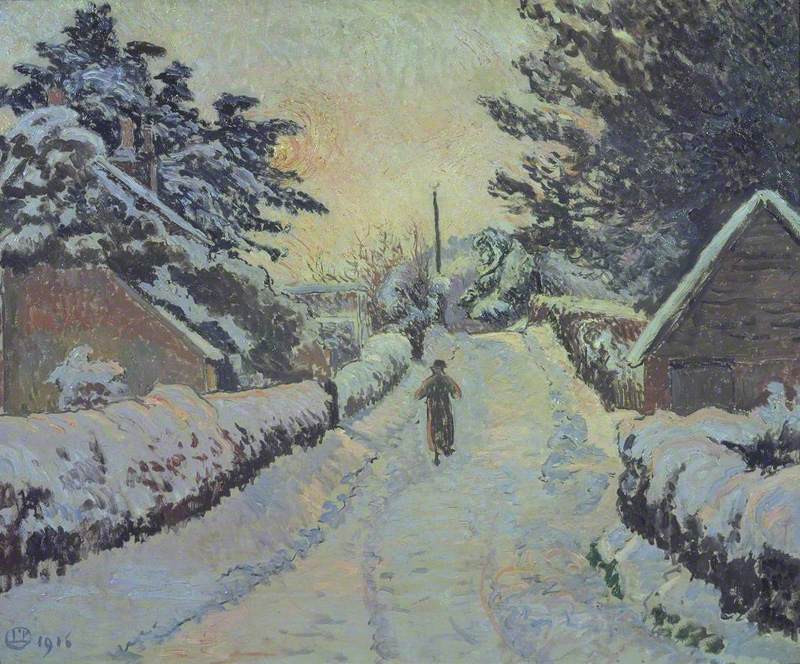 Lucien Pissarro (1863–1944)
Lucien Pissarro (1863–1944) -
 Charles Hodge Mackie (1862–1920)
Charles Hodge Mackie (1862–1920) -
 John Duncan Fergusson (1874–1961)
John Duncan Fergusson (1874–1961) -
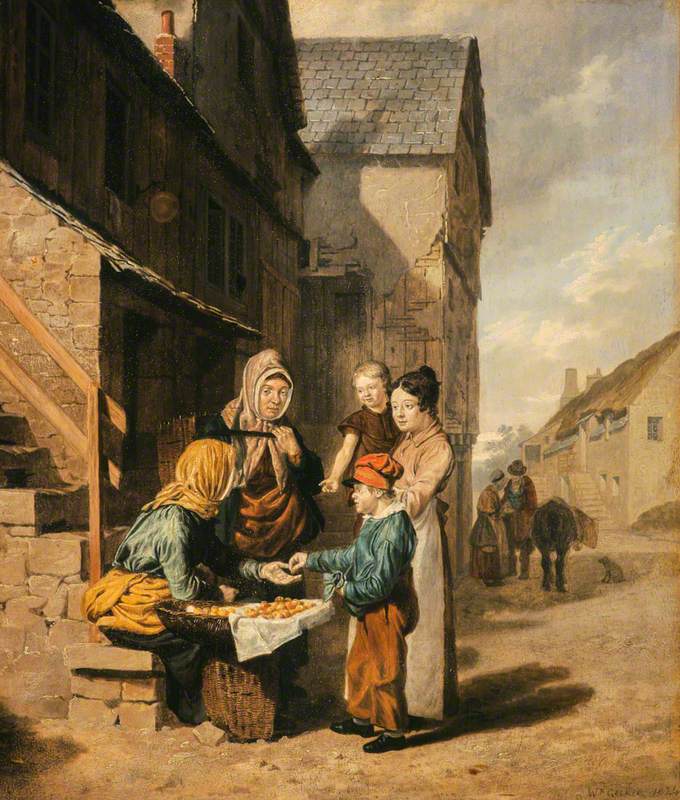 Walter Geikie (1795–1837)
Walter Geikie (1795–1837) -
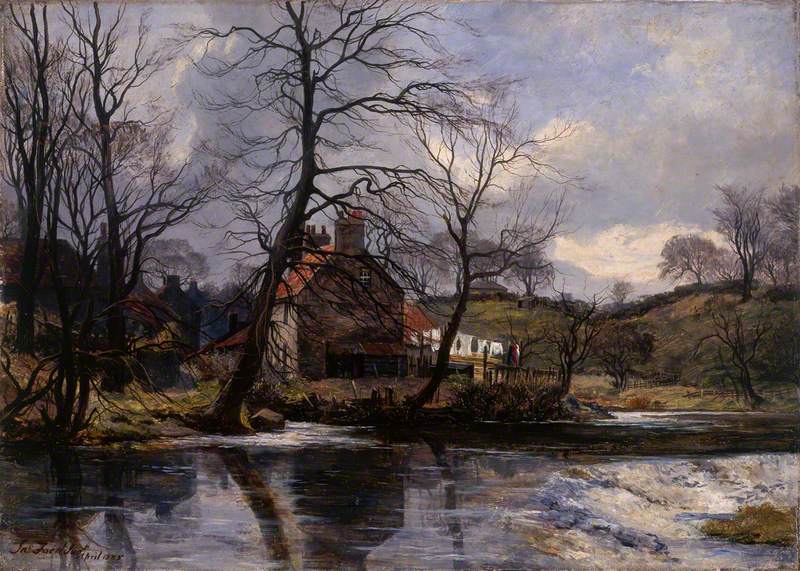 James Faed the younger (1857–1920)
James Faed the younger (1857–1920) -
 George Leslie Hunter (1877–1931)
George Leslie Hunter (1877–1931) -
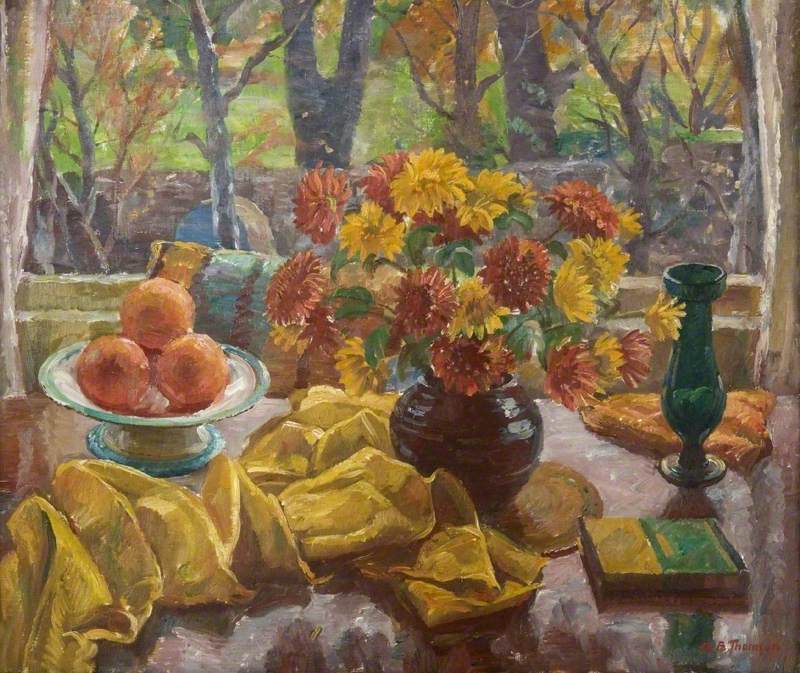 Adam Bruce Thomson (1885–1976)
Adam Bruce Thomson (1885–1976) -
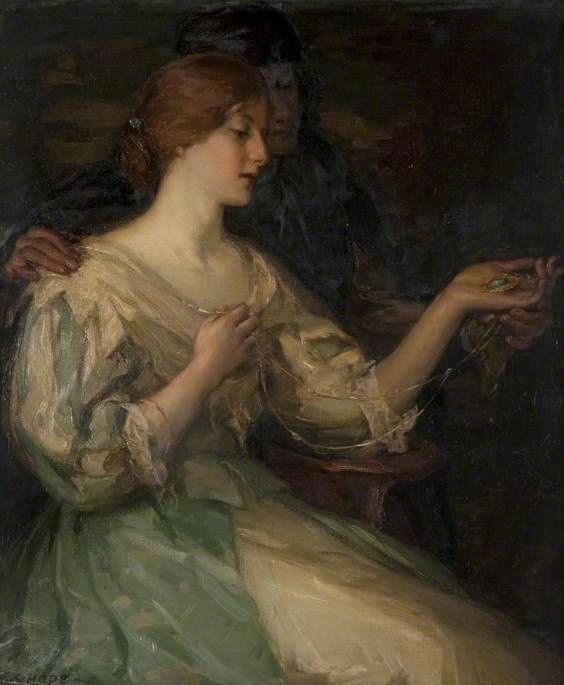 Robert Hope (1869–1936)
Robert Hope (1869–1936) -
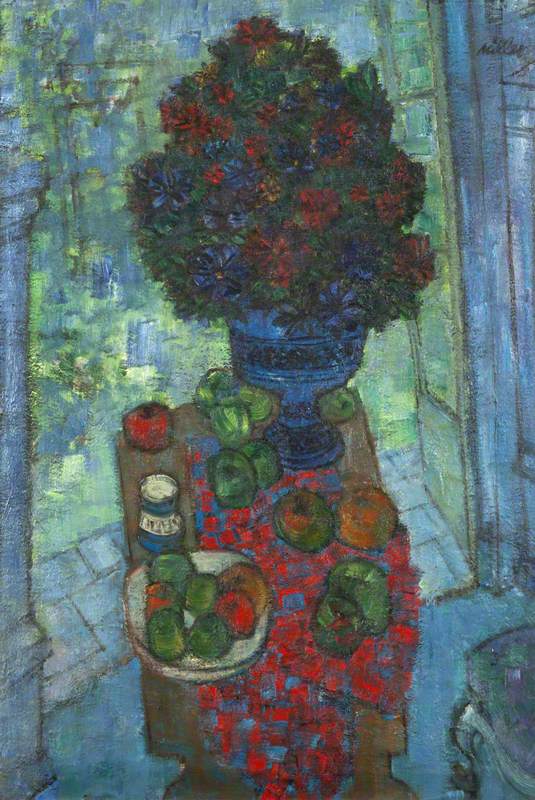 Robert Miller (1910–1993)
Robert Miller (1910–1993) -
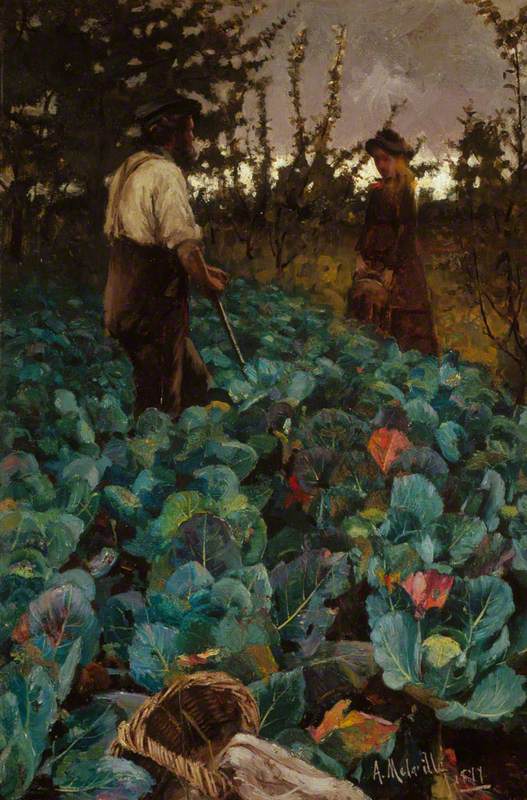 Arthur Melville (1855–1904)
Arthur Melville (1855–1904) - View all 18
